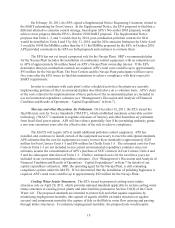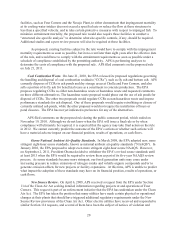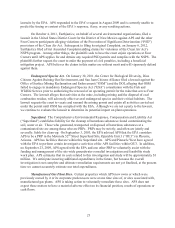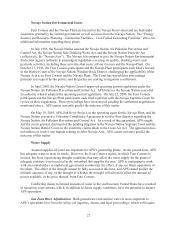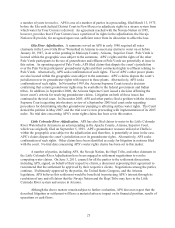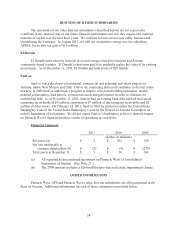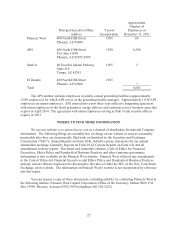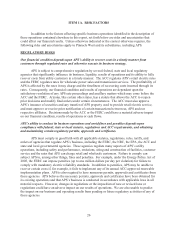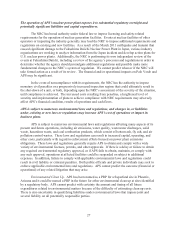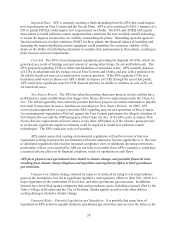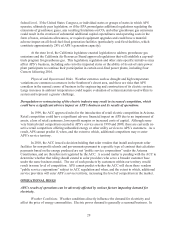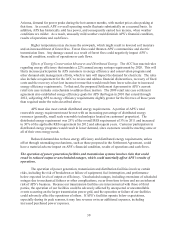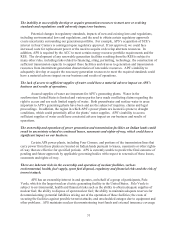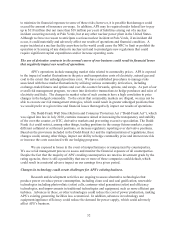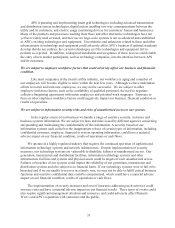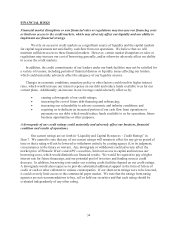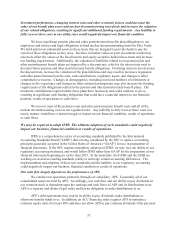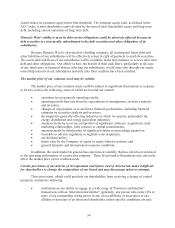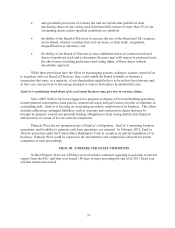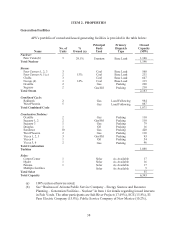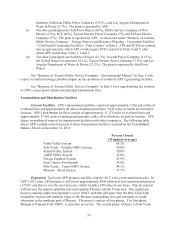APS 2011 Annual Report Download - page 53
Download and view the complete annual report
Please find page 53 of the 2011 APS annual report below. You can navigate through the pages in the report by either clicking on the pages listed below, or by using the keyword search tool below to find specific information within the annual report.
29
federal level. If the United States Congress, or individual states or groups of states in which APS
operates, ultimately pass legislation, or if the EPA promulgates additional regulations regulating the
emissions of greenhouse gases, any resulting limitations on CO2 and other greenhouse gas emissions
could result in the creation of substantial additional capital expenditures and operating costs in the
form of taxes, emissions allowances, or required equipment upgrades and could have a material
adverse impact on all fossil-fuel-fired generation facilities (particularly coal-fired facilities, which
constitute approximately 28% of APS’s generation capacity).
At the state level, the California legislature enacted legislation to address greenhouse gas
emissions and the California Air Resources Board approved regulations that will establish a cap-and-
trade program for greenhouse gas. This legislation, regulation and other state-specific initiatives may
affect APS’s business, including sales into the impacted states or the ability of its out-of-state power
plant participants to continue their participation in certain coal-fired power plants, including Four
Corners following 2016.
Physical and Operational Risks. Weather extremes such as drought and high temperature
variations are common occurrences in the Southwest’s desert area, and these are risks that APS
considers in the normal course of business in the engineering and construction of its electric system.
Large increases in ambient temperatures could require evaluation of certain materials used within its
system and represent a greater challenge.
Deregulation or restructuring of the electric industry may result in increased competition, which
could have a significant adverse impact on APS’s business and its results of operations.
In 1999, the ACC approved rules for the introduction of retail electric competition in Arizona.
Retail competition could have a significant adverse financial impact on APS due to an impairment of
assets, a loss of retail customers, lower profit margins or increased costs of capital. Although some
very limited retail competition existed in APS’s service area in 1999 and 2000, there are currently no
active retail competitors offering unbundled energy or other utility services to APS’s customers. As a
result, APS cannot predict if, when, and the extent to which, additional competitors may re-enter
APS’s service territory.
In 2010, the ACC issued a decision holding that solar vendors that install and operate solar
facilities for non-profit schools and governments pursuant to a specific type of contract that calculates
payments based on the energy produced are not “public service corporations” under the Arizona
Constitution, and are therefore not regulated by the ACC. A second matter is pending with the ACC to
determine whether that ruling should extend to solar providers who serve a broader customer base
under the same business model. The use of such products by customers within our territory would
result in some level of competition. APS cannot predict whether the ACC will deem these vendors
“public service corporations” subject to ACC regulation and when, and the extent to which, additional
service providers will enter APS’s service territory, increasing the level of competition in the market.
OPERATIONAL RISKS
APS’s results of operations can be adversely affected by various factors impacting demand for
electricity.
Weather Conditions. Weather conditions directly influence the demand for electricity and
affect the price of energy commodities. Electric power demand is generally a seasonal business. In


